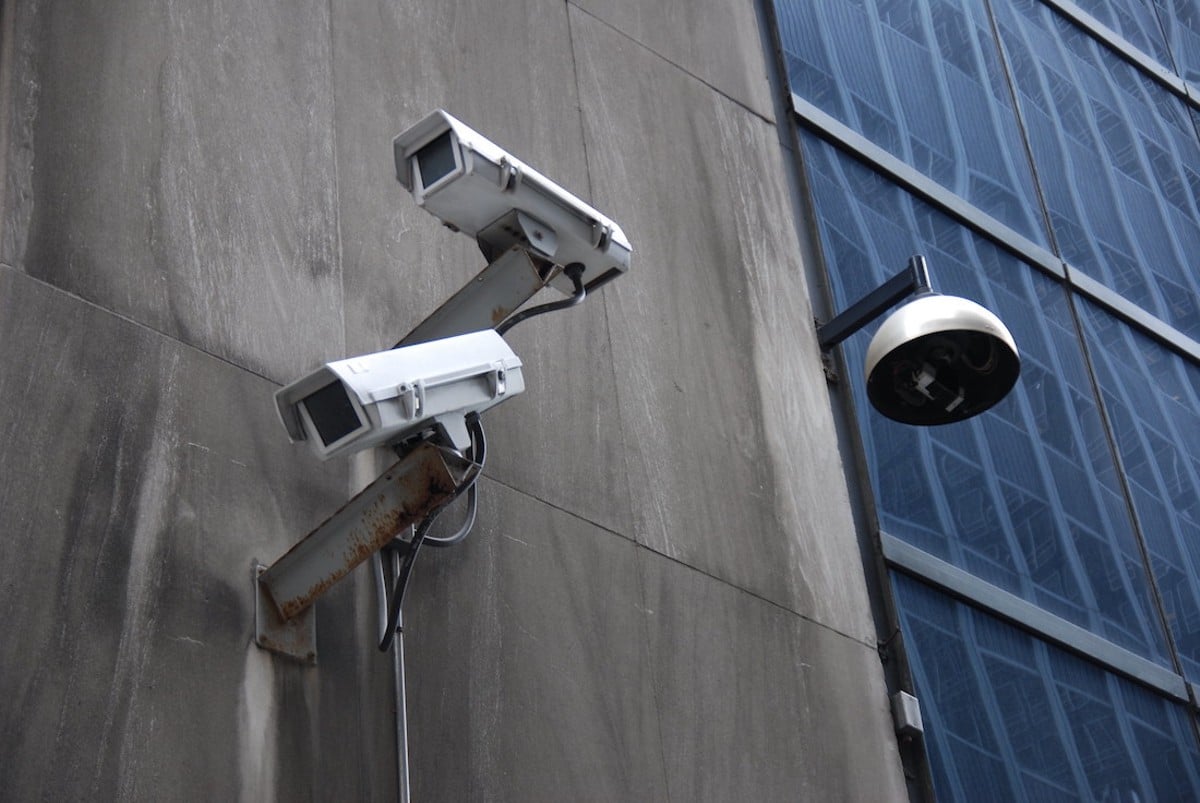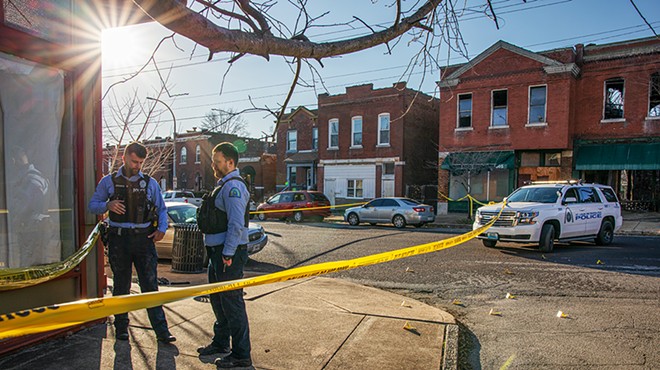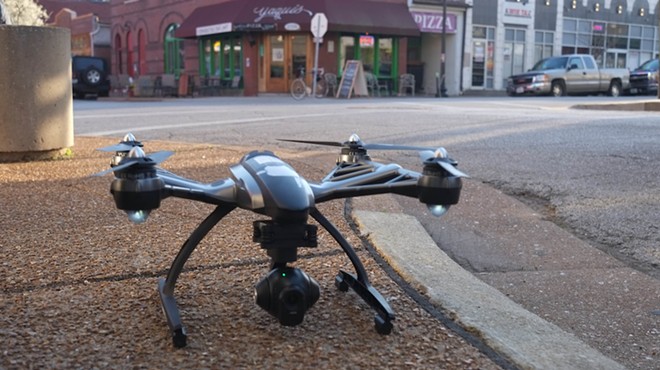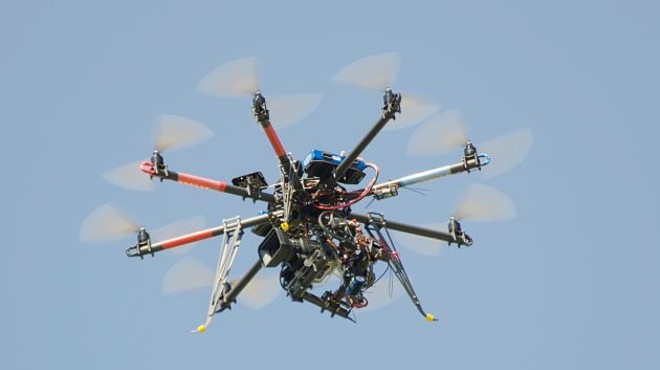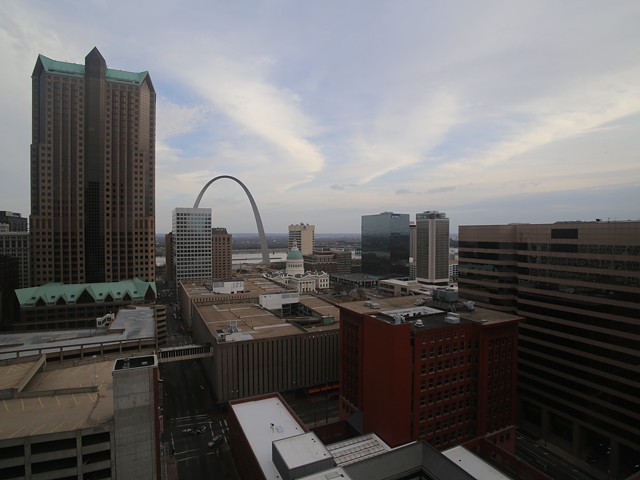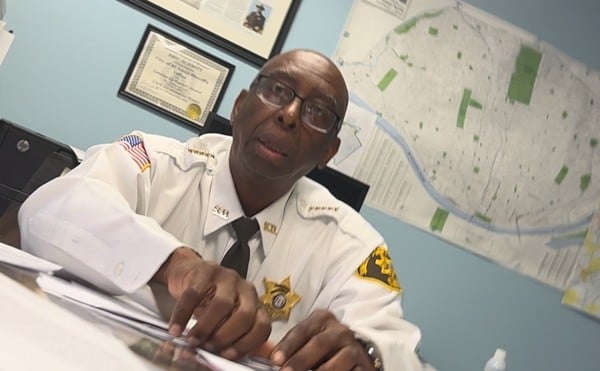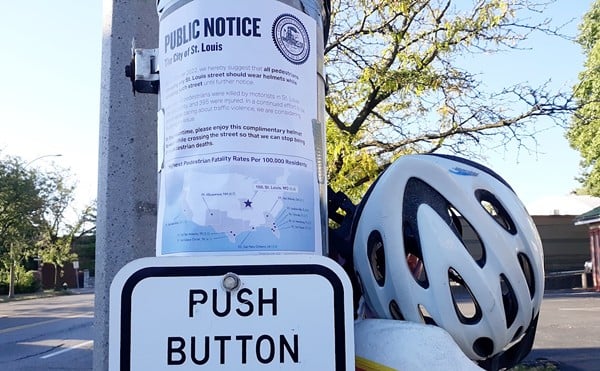St. Louis police are watching you with 630 cameras, two unmanned aircraft systems (a.k.a. drones), 379 license plate readers and more. These eyes in the sky are documented in the city’s first annual surveillance technology report.
The report, compiled by St. Louis Metropolitan Police Commissioner Robert Tracy, details the use of surveillance technology in the city. In a release about the report, Mayor Tishaura Jones credited the technology for a reduction in homicides.
“In 2023, St. Louis had 21 percent fewer homicides and a 22 percent decrease in part one crime,” her office says. “The Mayor’s public safety approach centers prevention, intervention and enforcement. Surveillance technology can be a vital tool for law enforcement to get to the scene of the crime quickly and as an investigative tool to bring justice to victims of crime.”
The report has a brief overview of what each tool does and how it can potentially be used, as well as what it costs the city to implement.
It specifies how many requests or hits each tech tool had, noting that it received 225,276 requests for footage from surveillance cameras in the city in 2023, nearly 100,000 of them from outside agencies. The cameras were especially useful to the intelligence division, the report says: “Intelligence Division installed approximately 10 covert cameras that were used in criminal investigations and Environmental Investigations Unit issued 470 Summons, resulting in 563 charges.”
And, in a one-year period, the department’s License Plate Readers received 47,667 license plate hits for felony crimes.
But what the report doesn’t say is how often these technologies have made mistakes or were used improperly, and it doesn’t specify how many cases were successfully prosecuted as a result of the evidence they provided.
It also mentions a highly controversial recognition service — St. Louis Mugshot Comparison Technology — provided through the city’s REJIS subscription. This technology has come under fire for its inability to accurately identify Black faces.
The American Civil Liberties Union is actively pushing back against use of the technology, saying it results in wrongful arrests.
The report did not disclose how exactly the mugshot recognition tool is being used by the city, saying: “Communications with the Saint Louis Fusion Center and the software liaison (Det. Shane Placeway – Maryland Heights Police Department) reviewed that the system does not log the accuracy nor presents that to the end user. The system does not want to provide any information that may suggest one candidate over another. In addition, the system does not save user logins and is not able to determine the total amount of activity used by the SLMPD.”
Only one citizen complaint was made about the surveillance technologies listed in the report from January 1, 2023, to January 1, 2024, the report says. This complaint concerned SLMPD’s use of surveillance cameras.
Civil rights and privacy advocates have criticized the city’s use of ShotSpotter and have pushed for the passage of surveillance oversight in recent months before the St. Louis Board of Aldermen.
To head off a separate board bill creating more oversight for police surveillance technology, Jones issued an executive order with Tracy regarding surveillance transparency. Aldermen argue this didn’t go far enough and later passed the oversight bill, referred to as CCOPS.
Jones credits her executive order as the reason for the report released today. Her media advisory on the report does not acknowledge the more stringent accountability passed by the Board of Aldermen, which she refused to sign — Board Bill 185.
“The Executive Order requires the department to describe how the technology is used, if the technology uses artificial intelligence, how many units of the technology the City uses, how its effectiveness is measured, how the technology is funded, how it is requested, if there have been complaints against the police for the use of specific technology, and which partnerships exist to use the technology,” Jones said in a statement.
While the report compiled by Tracy fulfills the requirements of the executive order, it remains unclear how accurate the surveillance tools truly are.
Subscribe to Riverfront Times newsletters.
Follow us: Apple News | Google News | NewsBreak | Reddit | Instagram | Facebook | Twitter | Or sign up for our RSS Feed

